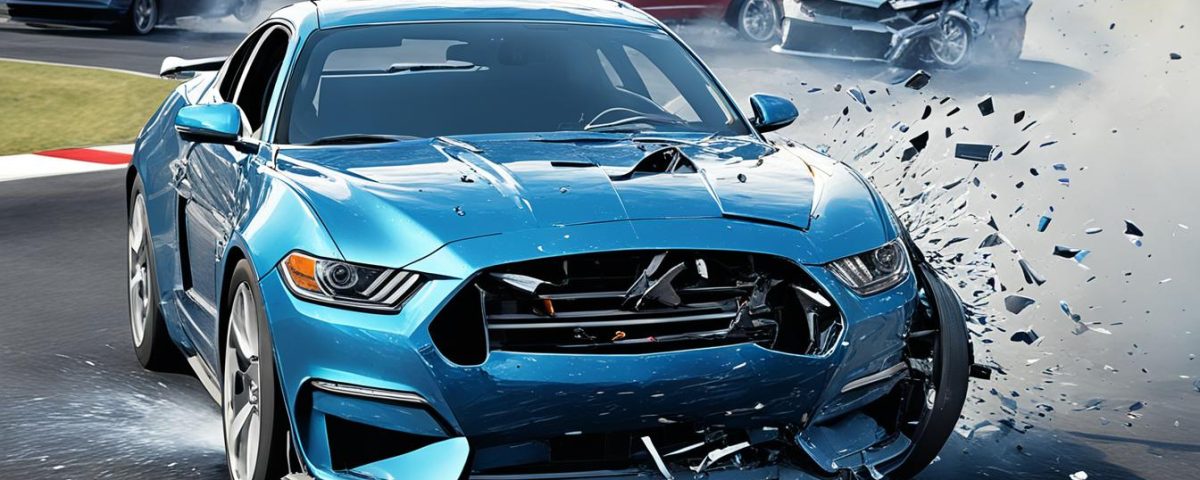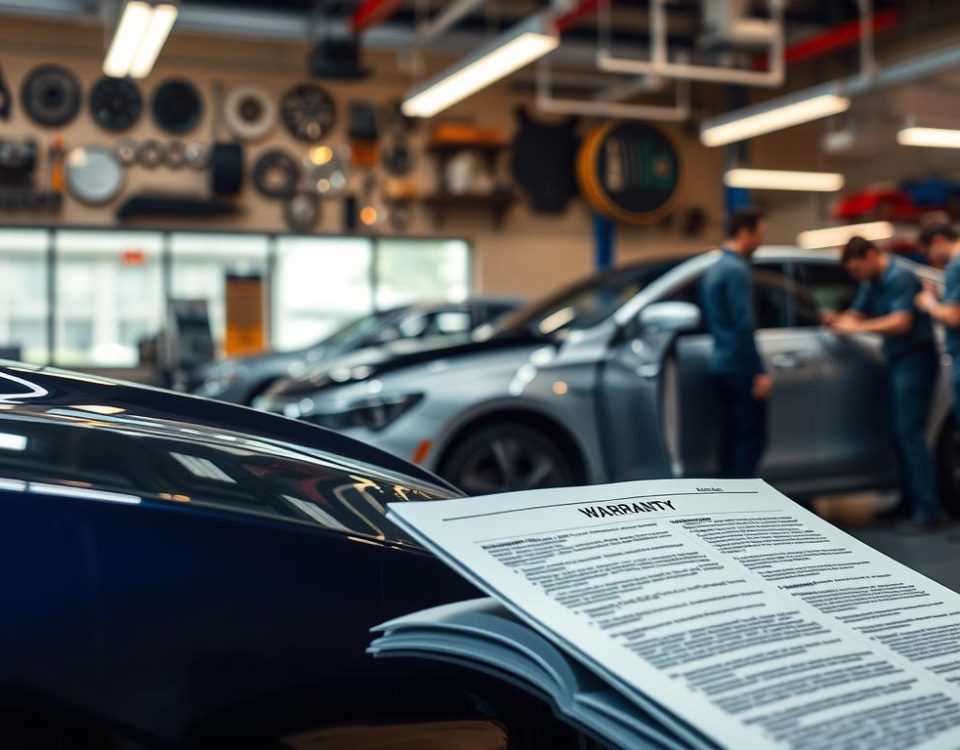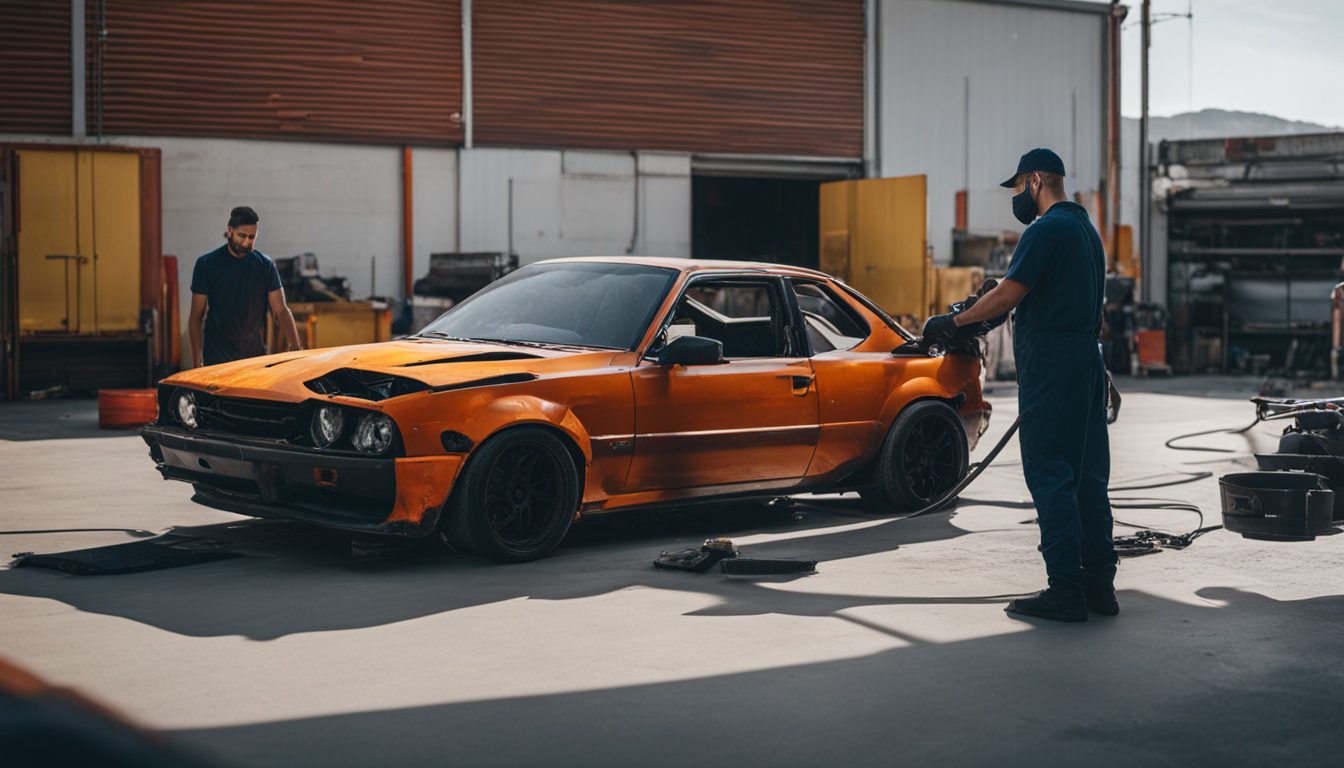
The Collision Repair Process: Step-by-Step Guide
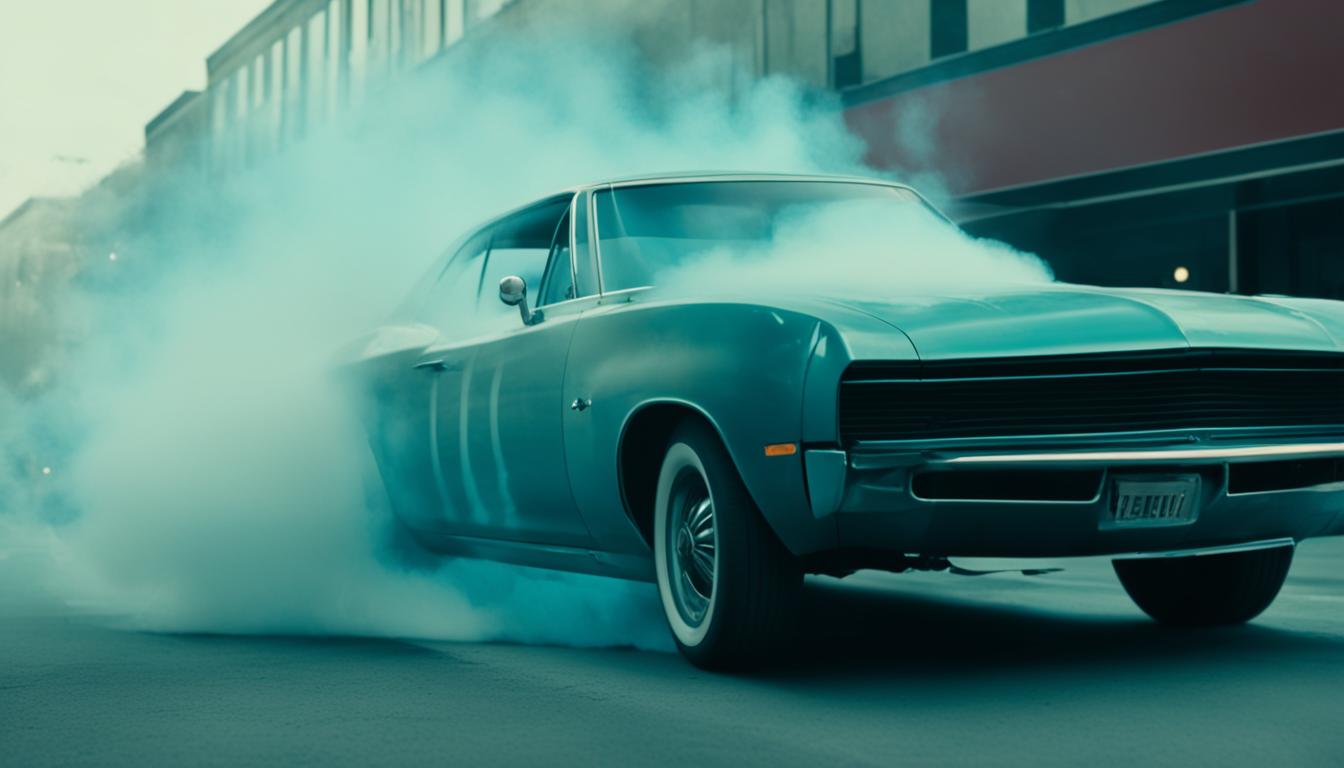
How to Identify Hidden Damage After a Minor Accident
Front-end, rear-end, and side-impact collisions are common types of crash damage. The NHTSA says front hits happen more than rear or side hits.
When a front crash happens, the bumper, headlights, and hood can get damaged. In a rear-end crash, the back bumper and lights might be hit. Side impacts can damage the door and glass heavily.
To fix these damages well, repair techs must know all about the car’s original repair info. They need this plus good diagnostics to identify and fix issues right. This way, we make sure our customers get safe and accurate repairs.
Key Takeaways:
- Front-end, rear-end, and side-impact collisions are the most common types of collision damage.
- Front-impact collisions are the most frequent.
- Front-end collisions can damage bumper, headlights, grills, hoods, windshields, suspension, and frame.
- Rear-end collisions can damage rear bumper, lights, trunk, exhaust system, and transmission.
- Side-impact collisions can damage door panels, glass, wheels, and frame.
Front-End Collisions
Front-end collisions are common and often cause serious damage to vehicles. They happen when one vehicle’s front hits the front of another vehicle or an object. These collisions can badly harm many parts, such as the bumper, headlights, and hood.
This type of crash can mess up the suspension system and affect how well sensors and other tech work. Today’s cars have high-tech safety features and driver assistance. But these can be damaged when a front-end collision occurs.
Fixing a vehicle after a front-end collision needs a special touch. It’s crucial to follow the original repair methods. This includes using the right tools and making sure the safety features work correctly after the fix.
Dealing with front-end damage the right way is really important. Not fixing things properly could make the car less safe. But with the correct steps, a repair shop can make the car as good as new.
Components commonly damaged in front-end collisions:
- Bumper
- Headlights
- Grilles
- Hoods
- Windshields
- Suspension
- Frame
When a car’s been in a front-end crash, it’s key to look at all the areas that might be hurt. Repair people need to know the newest fixes and have the right tools. They should make the car just as safe and strong as it was before the accident.
Rear-End Collisions
Rear-end collisions happen often and can really mess up a car. They can mess up the rear lights, trunk, and more. This kind of damage affects both the outside and inside of a car.
The exhaust system is one part that can get hurt in a rear-end crash. The hit can push it forward, hurting parts like the catalytic converter. This can change how well your car runs and the gases it lets out.
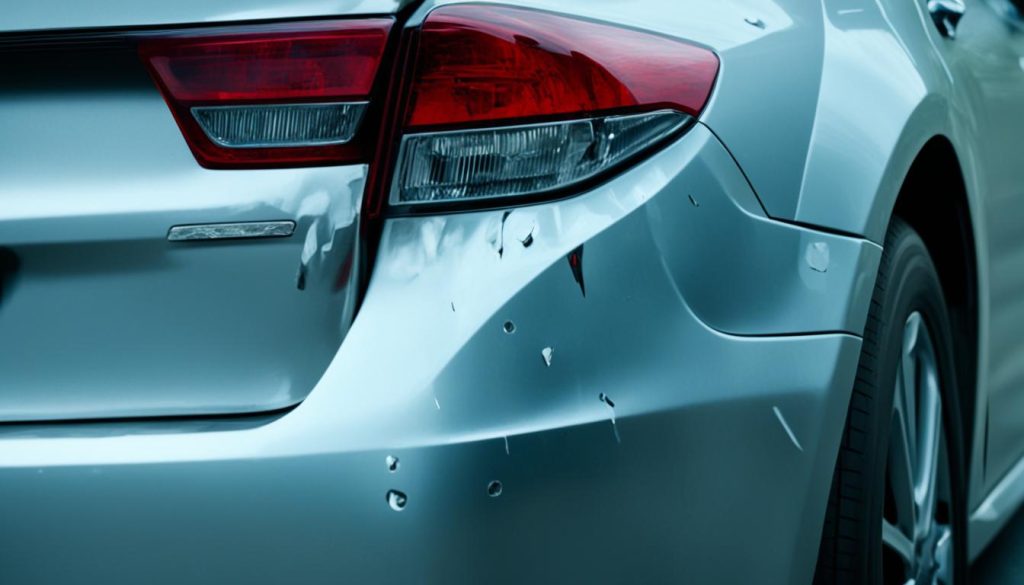
Frame damage is also a big deal from these crashes. If the frame isn’t right, the car might not be as safe to drive. To fix the frame, repair people use special tools and follow car maker’s directions closely.
Damage can also hit safety systems in newer cars after a rear-end hit. These systems make sure your car is safe to drive. If they’re hurt, they might not work right until they’re fixed.
Cars with rear-wheel or all-wheel-drive may see problems with their transmission after a crash. This is what helps the car move. You need quick checks and the right repairs to keep your car driving well.
Fixing rear-end crash damage takes skill, good repair info, and special tools. Repair shops must keep up with what’s new in fixing cars.
Side-Impact Collisions
Side-impact collisions can damage many parts of a car heavily. The door panels often get dented or destroyed completely. Since cars now use lighter materials for doors and panels, they might need full replacement after a crash. This makes sure the car stays safe to drive.
During a side-impact, the glass on the side windows might break. This brings even more damage. Also, the wheels, especially if they’re light, could be badly hurt. They might have to be swapped out because of the crash’s force.
Fixing the car’s frame and structure is vital after a side-impact. This kind of accident can make the car’s frame weaker, which is a big safety issue. It’s key for repair experts to follow the carmaker’s advice. This way, they can use the right materials when fixing the car. It’s about making the car as safe as it was before the crash.
Repairing after a side-impact is complex and needs careful work. The repair shops need to know the latest in fixing these kinds of accidents. By keeping updated and following the right processes, they can make the car as good as new. This guarantees the safety of everyone inside.
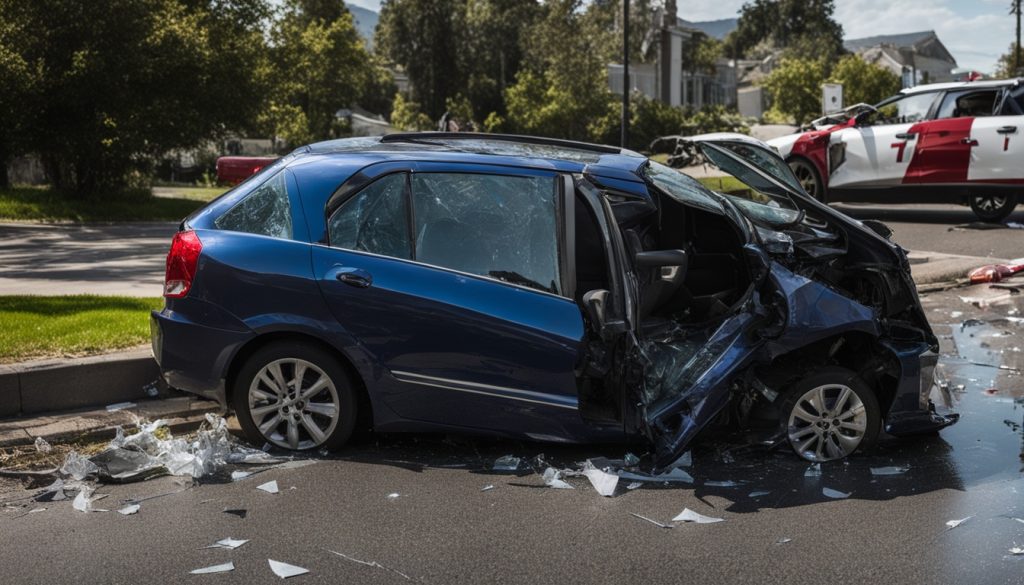
Summary:
- Side-impact collisions can cause damage to door panels, glass, wheels, and the vehicle’s frame.
- Modern vehicles often use lightweight materials, necessitating their replacement in cases of severe damage.
- Repairing side-impact collision damage requires utilizing OEM information for accurate repairs.
- The frame and overall structure of the vehicle are critical areas to address in the repair process.
Conclusion
Knowing about different types of collision damage is key for car owners and drivers. The field of collision repair is always changing, mainly because cars are now packed with new tech and safety gear.
Fixing cars safely and correctly depends a lot on having the right repair info. It’s crucial to always learn the newest repair methods and use the best software for car fixes.
The work we do in collision repair is essential for everyone’s safety. With detailed repair plans and new repair methods, we make sure cars look and work like they did before an accident. This gives car owners a sense of relief.
We are all about keeping up with the latest in our business and making high-quality car fixes. We promise the safest and best repairs, all focused on keeping our customers happy.


